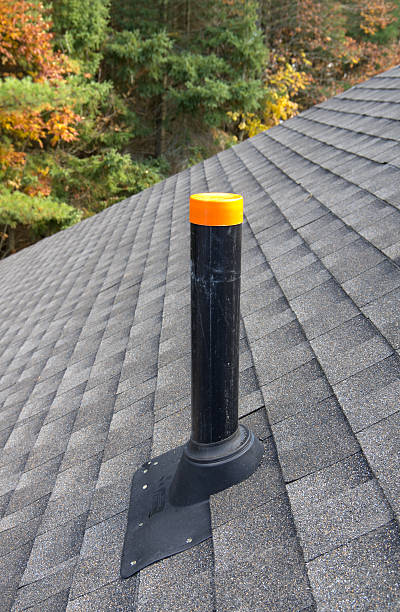Proper Ventilation in Plumbing Systems: Why It Matters
Proper Ventilation in Plumbing Systems: Why It Matters
Blog Article
The publisher is making a few great points on the subject of Essential Plumbing Vent Pipes: Understanding Their Role as a whole in this post which follows.

Proper air flow in pipes systems is frequently forgotten, yet it is critical for maintaining the functionality and security of your home's pipes. Air flow assists control atmospheric pressure, avoid the build-up of damaging gases, and ensure the reliable removal of waste. In this overview, we will discover the significance of appropriate pipes air flow, how it functions, and the advantages it offers your plumbing system.
Comprehending Ventilation in Pipes
Ventilation in pipes describes the network of pipes that allow air to flow via the drainage system. These vents serve multiple functions, consisting of regulating atmospheric pressure within the pipes, preventing sewer gases from entering the home, and aiding in the smooth flow of wastewater.
Exactly How Ventilation Functions in Plumbing Solutions
Air Pressure Law
Correct ventilation keeps balanced air pressure within the pipes system. When water moves via pipes, it displaces air. Without appropriate air flow, this displacement can create negative pressure, bring about slow drains or siphoning of water from catches, which can create undesirable smells to seep right into the home.
Stopping Sewer Gas Build-up
Among one of the most essential functions of plumbing vents is to prevent sewage system gases, such as methane and hydrogen sulfide, from accumulating within the home. These gases can position serious wellness risks and are very flammable. Vent pipelines permit these gases to get away securely outside.
Helping in Waste Elimination
Ventilation aids in the effective removal of wastewater by stopping airlocks in the water drainage system. When air can stream openly through the vents, it permits water and waste to move efficiently with the pipes, decreasing the danger of obstructions and back-ups.
Sorts Of Pipes Vents
Key Stack Vent
The main stack vent, also known as the air vent pile, is the key air vent in a plumbing system. It extends from the main drain line up with the roof covering, allowing gases to get away and fresh air to go into the system.
Branch Vent
Branch vents link to the primary pile air vent and offer private components, such as sinks, bathrooms, and showers. These vents ensure that each component has adequate air flow to operate properly.
Air Admission Shutoff (AAV).
An Air Admittance Shutoff (AAV) is a one-way valve that allows air to get in the plumbing system without the need for a standard vent pipeline prolonging via the roof. AAVs are frequently made use of in renovations or areas where mounting a conventional air vent is impractical.
Indicators of Poor Air Flow in Plumbing.
Slow Draining Fixtures.
If your sinks, bathtubs, or toilets are draining pipes slowly, maybe an indicator of poor air flow. Inadequate air circulation can develop a vacuum impact, making it difficult for water to drain appropriately.
Gurgling Appears.
Gurgling audios originating from drains pipes are frequently a result of air being sucked with water traps as a result of unfavorable stress in the pipelines. This is a clear indicator of insufficient ventilation.
Undesirable Smells.
Sewer odors inside your home are a warning that your plumbing system is not effectively aerated. This might imply that drain gases are not being adequately aired vent outside, causing possibly unsafe problems.
Typical Ventilation Errors.
Poor Vent Sizing.
Using undersized vent pipelines can cause inadequate air flow and stress discrepancies in the system. It's essential to make use of vents that fulfill the specific demands of your pipes system.
Improper Vent Positioning.
Positioning vents too far from the components they offer can reduce their performance. Proper placement makes sure that air can flow freely and efficiently with the system.
Disregarding Code Demands.
Building ordinance give specific guidelines for plumbing ventilation. Disregarding these codes can result in a system that fails to operate properly and might cause expensive repair work or health hazards.
Advantages of Proper Air Flow.
Enhanced System Efficiency.
Effectively aerated plumbing systems run more efficiently, with less clogs, faster draining, and less strain on the pipes. This efficiency extends the lifespan of the plumbing system.
Improved Air High Quality.
By protecting against sewer gases from entering your home, correct ventilation contributes to far better indoor air top quality, making your living atmosphere healthier and a lot more comfortable.
Avoiding Water Damage.
Appropriate air flow aids avoid water from being siphoned out of catches, which can cause sewer gases going into the home and causing water damage gradually.
Steps to Make Certain Appropriate Ventilation.
Consulting Pipes Codes.
Constantly seek advice from local plumbing codes when designing or modifying your pipes system. These codes offer the needed standards for correct venting and ensure your system meets safety standards.
Regular Evaluation and Maintenance.
Regular inspections can aid determine prospective ventilation concerns before they become significant issues. Maintenance jobs, such as cleaning air vent pipelines and looking for clogs, are important for keeping the system in good working order.
Specialist Installation.
For new setups or major alterations, it's smart to hire a professional plumbing professional. They have the knowledge to make certain the ventilation system is properly developed and mounted according to code.
Final thought.
Proper air flow is a crucial component of any pipes system, guaranteeing that it operates successfully and safely. By recognizing the importance of air flow, recognizing the signs of inadequate air flow, and taking actions to maintain your system, you can avoid expensive issues and secure your home's air high quality.
Understanding the Role of Your Plumbing Vents in the Drainage System
The plumbing system in your home is more than just the kitchen sink, toilet, and bathroom. Some problems that arise within home plumbing are hard to detect because homeowners may not understand potential causes.
One part of the plumbing system that could cause you endless problems is the venting. The drain lines that run through your home and drain wastewater need proper venting to function properly. Faulty plumbing vents can lead to several problems that require the expertise of a plumber to check them out. Before finding experienced plumbing services, there are a few things to learn about plumbing vents.
Why vents are vital
Vents in the plumbing system lead to an outside area such as the roof or the back. The function of these vents is to keep sewer gases away from the drain pipes. They also establish seals in the drainage pipes that prevent the sucking back of waste gases into the home. Venting in the plumbing system also allows oxygen to get into the drainage system, which is an essential component in the breakdown of waste matter. The vents also ensure that the air pressure within the drainage system remains balanced, facilitating the flow of wastewater.
Possible problems
When the plumbing vents are problematic, one of the consequences is imbalanced water levels in the toilet. If you notice that the levels in the toilet bowl rise and fall all the time, then there may be something wrong with the vents.
Another issue is air bubble formation within the toilet. In most cases like these, the drain pipes are not receiving enough air. Lack of air pressure equalization is what leads to water flow problems. If you come across such issues in your home, make sure you call professional plumbers, such as the ones from Perfection Plumbing & Drain Cleaning Ltd.
Potential causes
Several scenarios can lead to some of the plumbing problems that homeowners suffer because of venting. One such scenario is the use of incorrectly sized vents. Usually, vents are the same size as the drain line to facilitate proper venting. Vents that are too small will lead to some plumbing issues. Another potential cause is fixtures that are not close enough to the vents. In this scenario, air forces itself through the traps of other fixtures, leading to gurgling sounds from toilets and sinks.
Most of these problems also happen with clogged vents. Tree leaves and debris can cause clogging when they make their way down a vent. Unclogging plumbing vents is a service that you can entrust to Saskatoon plumbers. They will know how to snake down vents and remove clogging stuck in fixtures.

Do you enjoy reading about What Is A Plumbing Vent & How Do They Work?? Put a comment down below. We'd be glad to find out your opinion about this entry. We hope to see you back again in the near future. In case you enjoyed our page plz make sure you remember to share it. We take joy in reading our article about Why Plumbing Air Vents Are Important.
Book Your Service Report this page